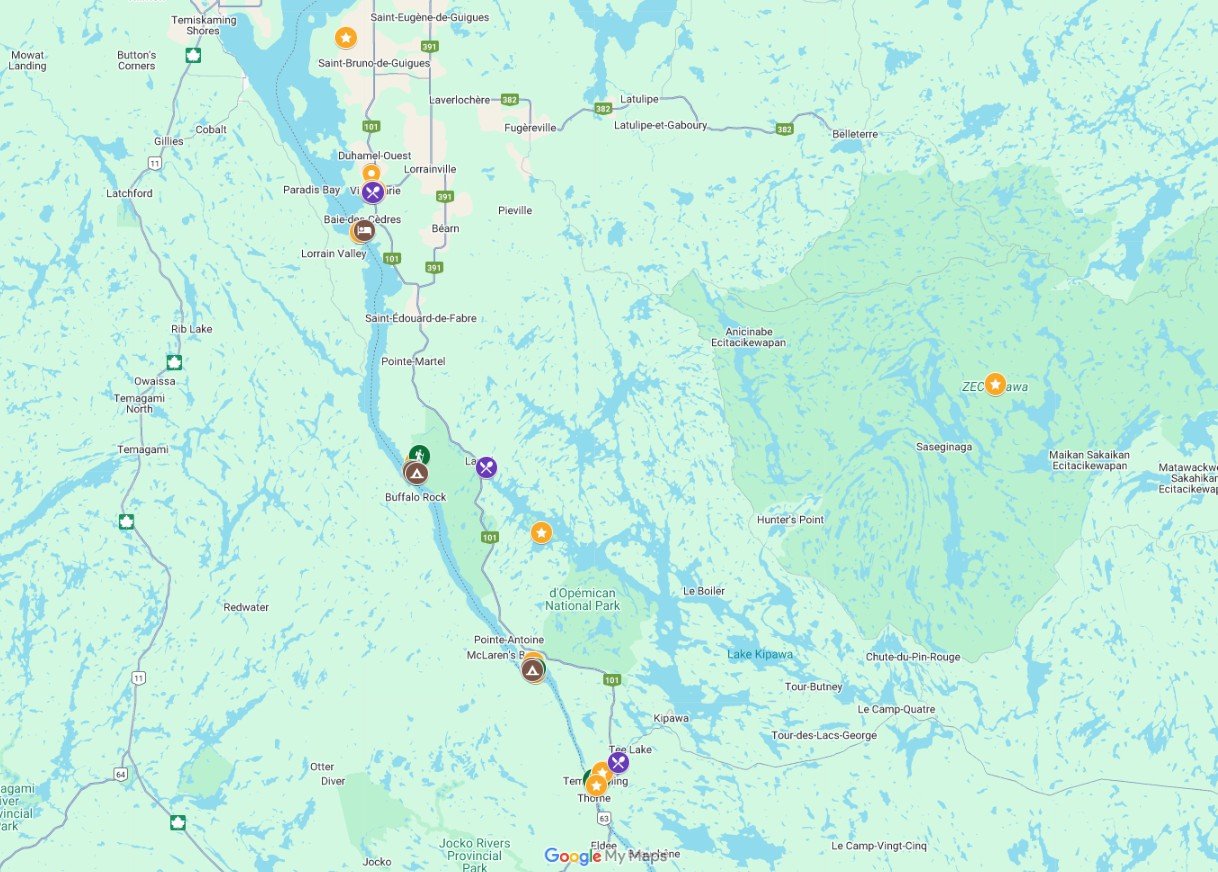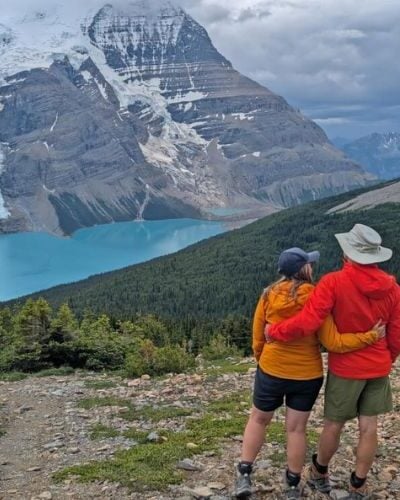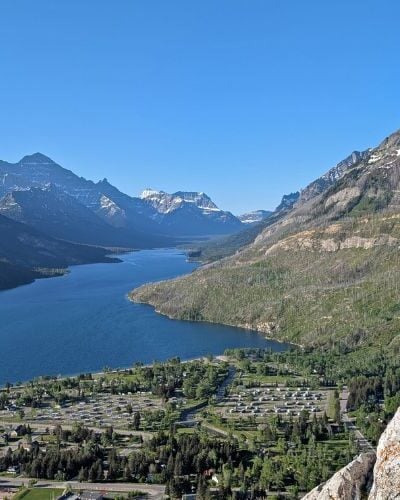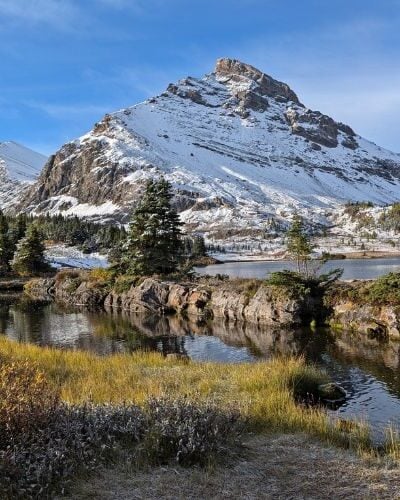Tucked against Québec’s western border, Témiscamingue is a small yet underrated area that flies under the radar of most travellers.
Témiscamingue’s compact size and mix of lakes, forest, farmland and rivers make it perfect for exploring on a relaxed road trip, with plenty of time to hike, paddle and discover welcoming small towns along the way.
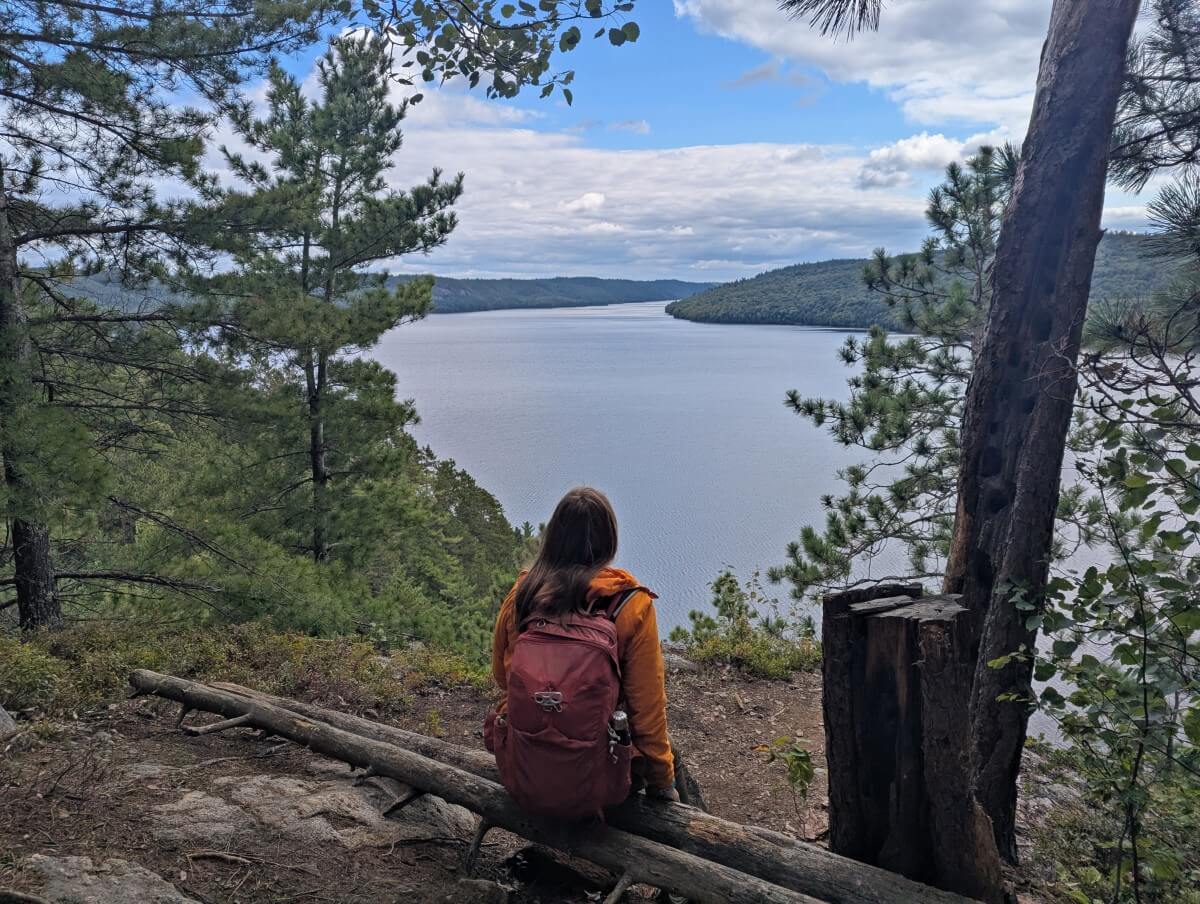
We visited Témiscamingue for the first time at the end of a nine day adventure across the wider Abitibi-Témiscamingue region.
As we arrived from the north, we were struck by its distinct character and pleasantly surprised at how calm and quiet it felt, despite being right next to Ontario. We were further charmed by the local towns, Opémican National Park, and the region’s water-filled landscapes.
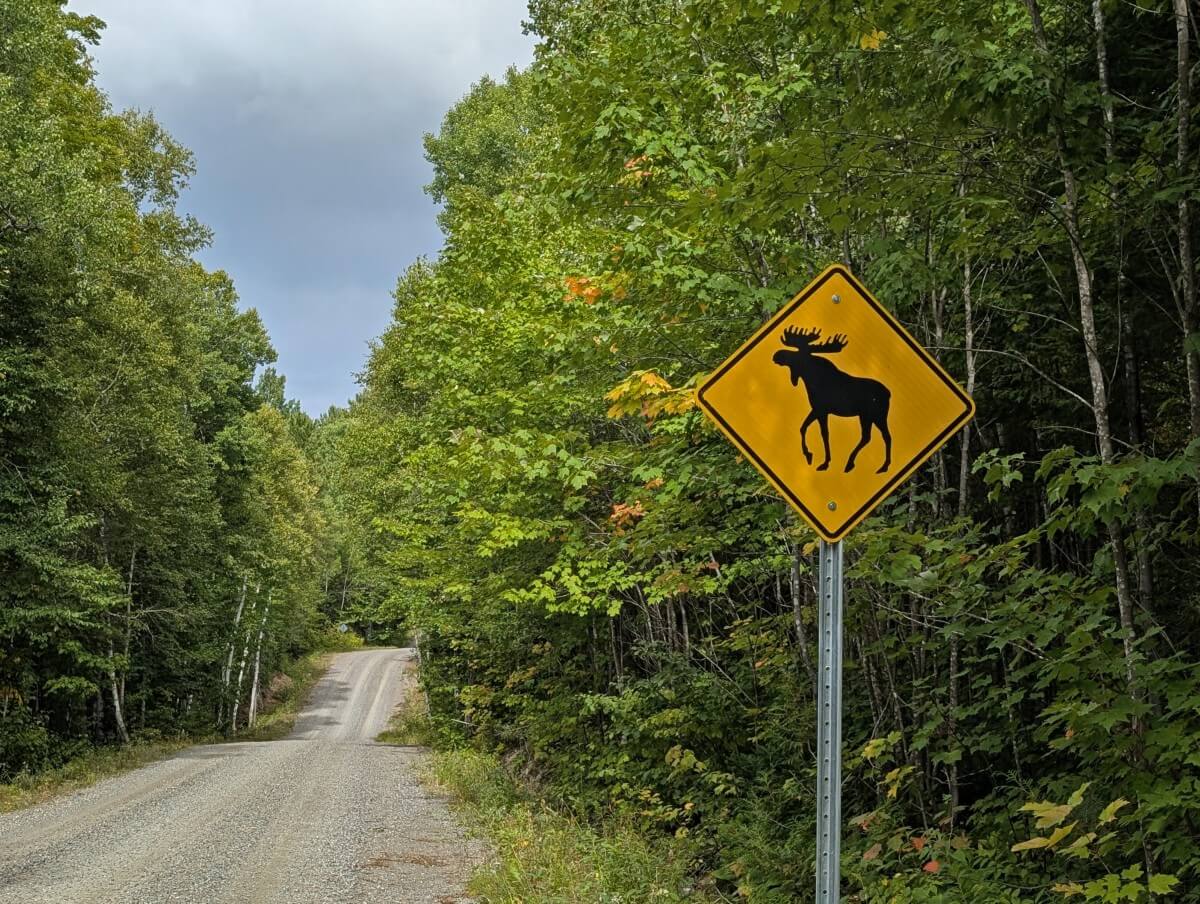
For an authentic travel experience in a peaceful, easy-to-explore area surrounded by nature, Témiscamingue, Québec, is a great choice.
In this post, I’ll share all the best things to do in Témiscamingue along with helpful travel tips and an example of a 3 to 4 day travel itinerary.
In partnership with Tourisme Abitibi-Témiscamingue. There are affiliate links below. If you click and make a purchase, we may receive a percentage of the sale.
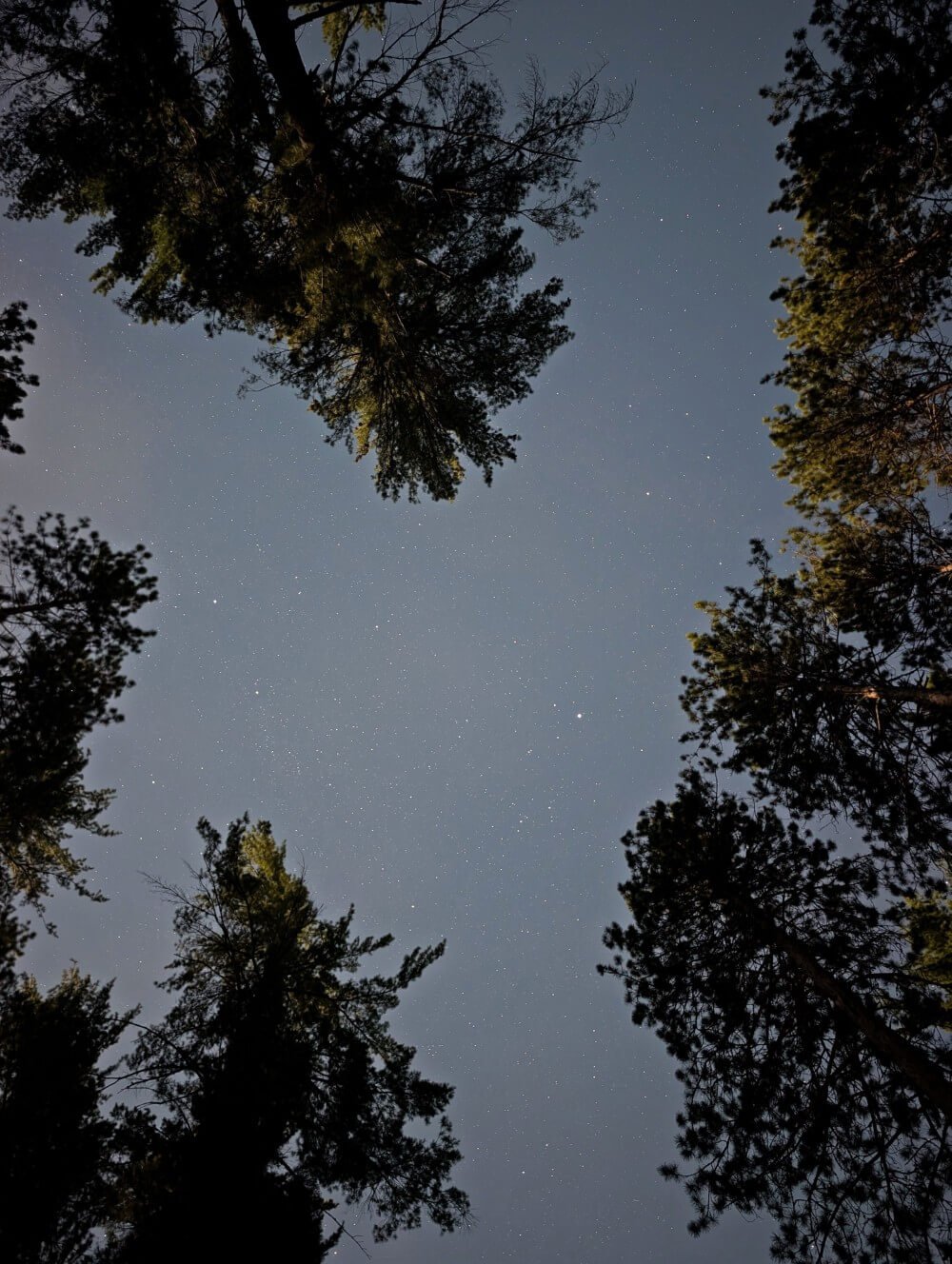
Introducing Témiscamingue, Québec
Témiscamingue is a rural area in western Québec, with Lake Timiskaming and the Ottawa River forming a boundary along the Ontario border. Témiscaming and Ville-Marie are the largest communities, both with around 2400 residents.
While located in Québec, Témiscamingue is actually closer to Ontario cities compared to Montréal, such as North Bay (70km, 1 hour drive), Ottawa (370km, 4 hours) and even Toronto (410km, 4.5 hours). But you wouldn’t know it – Témiscamingue remains pretty quiet, even in the summer months.

The word Témiscamingue is Algonquin for ‘deep water’ or ‘place of deep water,’ referring to Lake Timiskaming. The Anicinabe (Algonquin/Anishinaabe) peoples have lived in this area for thousands of years, long before European settlers arrived in the 17th century.
Témiscamingue is part of the larger Abitibi-Témiscamingue region. The hyphen is important – connected but distinctly different. Their contrasting appearances are the result of very different geological pasts.
Forested hills, valleys, and vast lakes define Témiscamingue, while Abitibi’s landscape reflects the rugged Canadian Shield with dense boreal forest, shallow muddy lakes and rolling terrain. Even within Abitibi, there are big differences – the western side is pretty agricultural, as is Témiscamingue.
Highlights of Témiscamingue
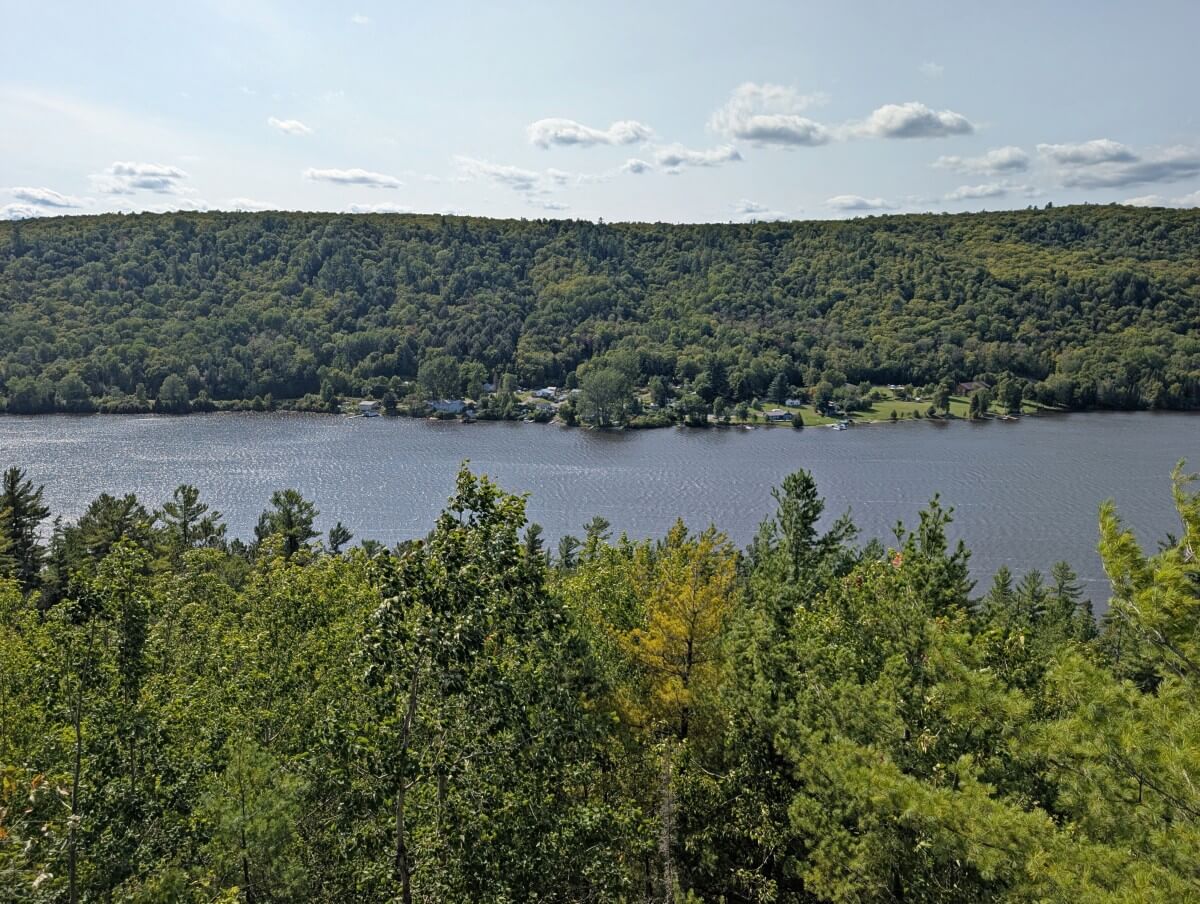
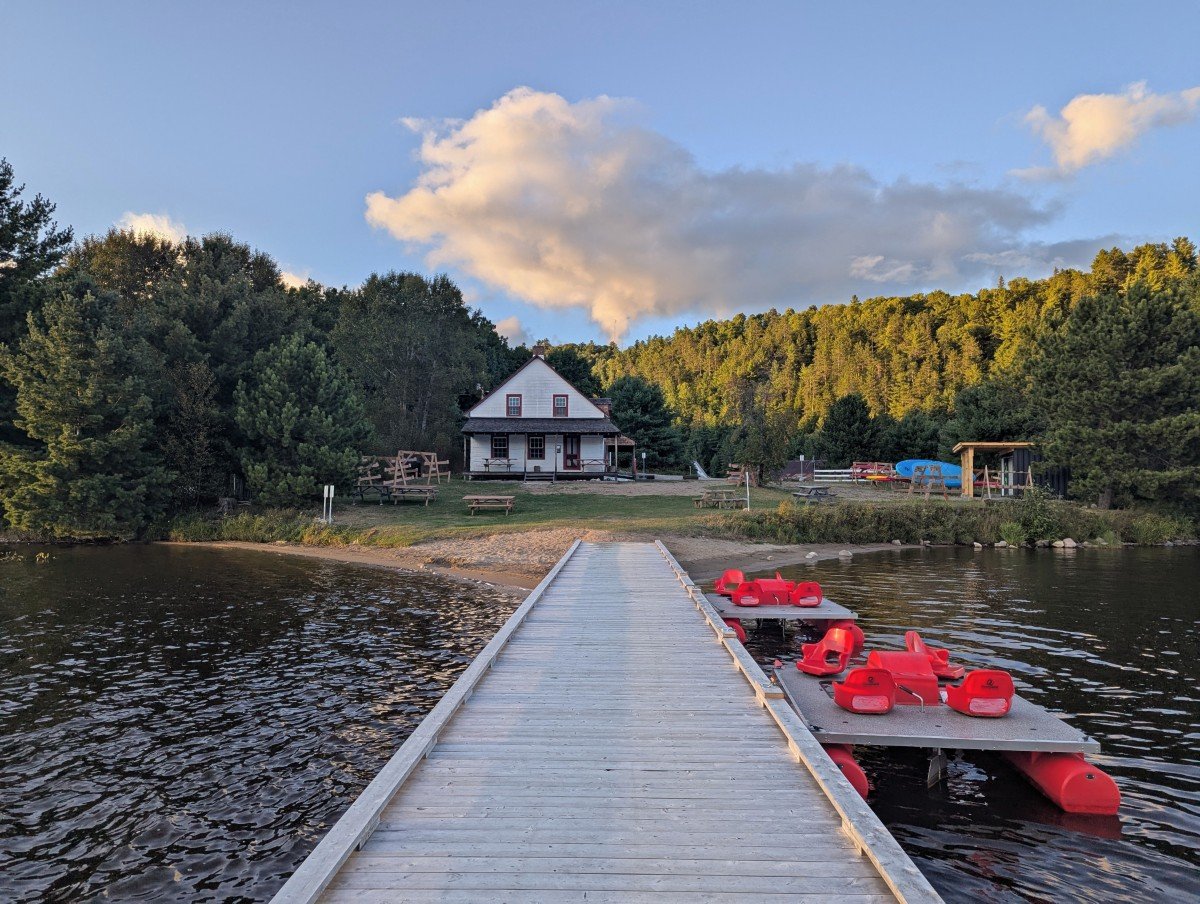

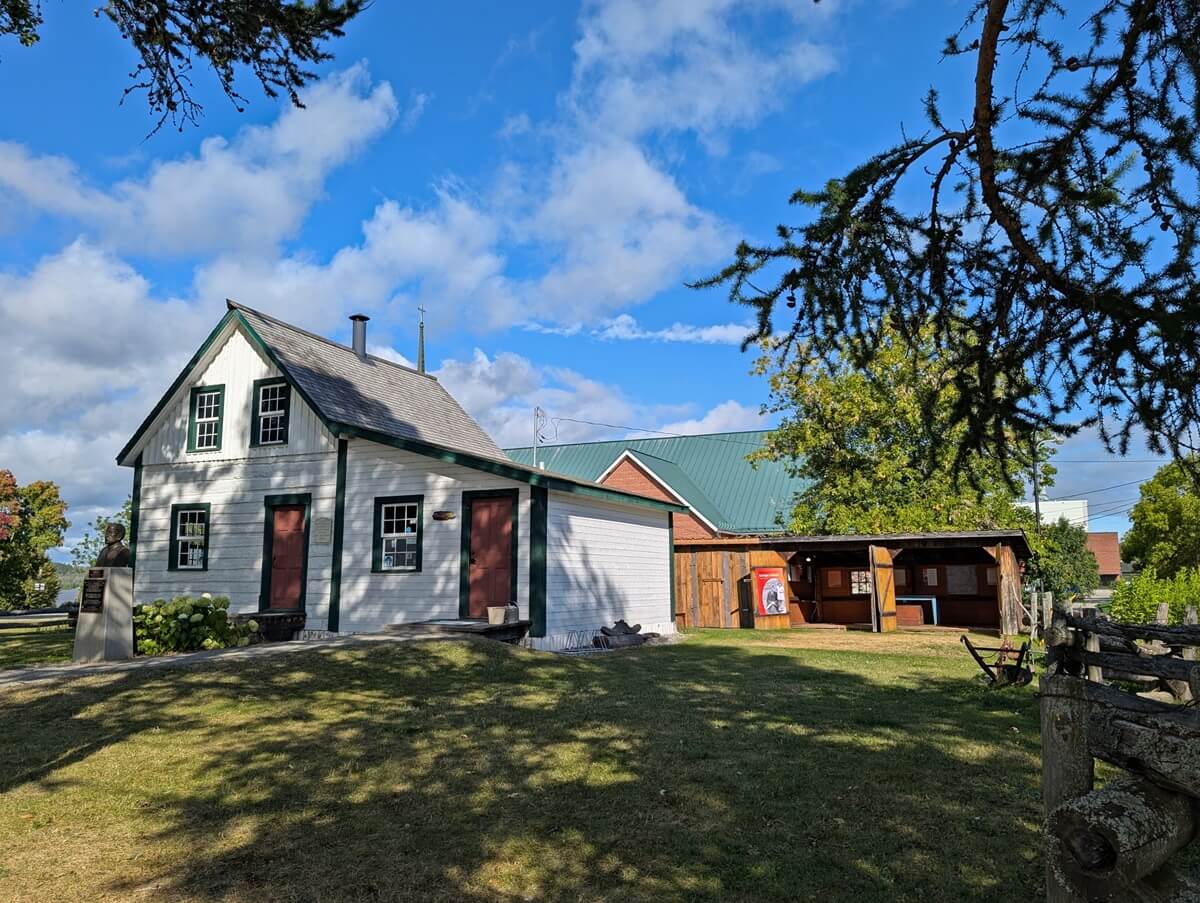
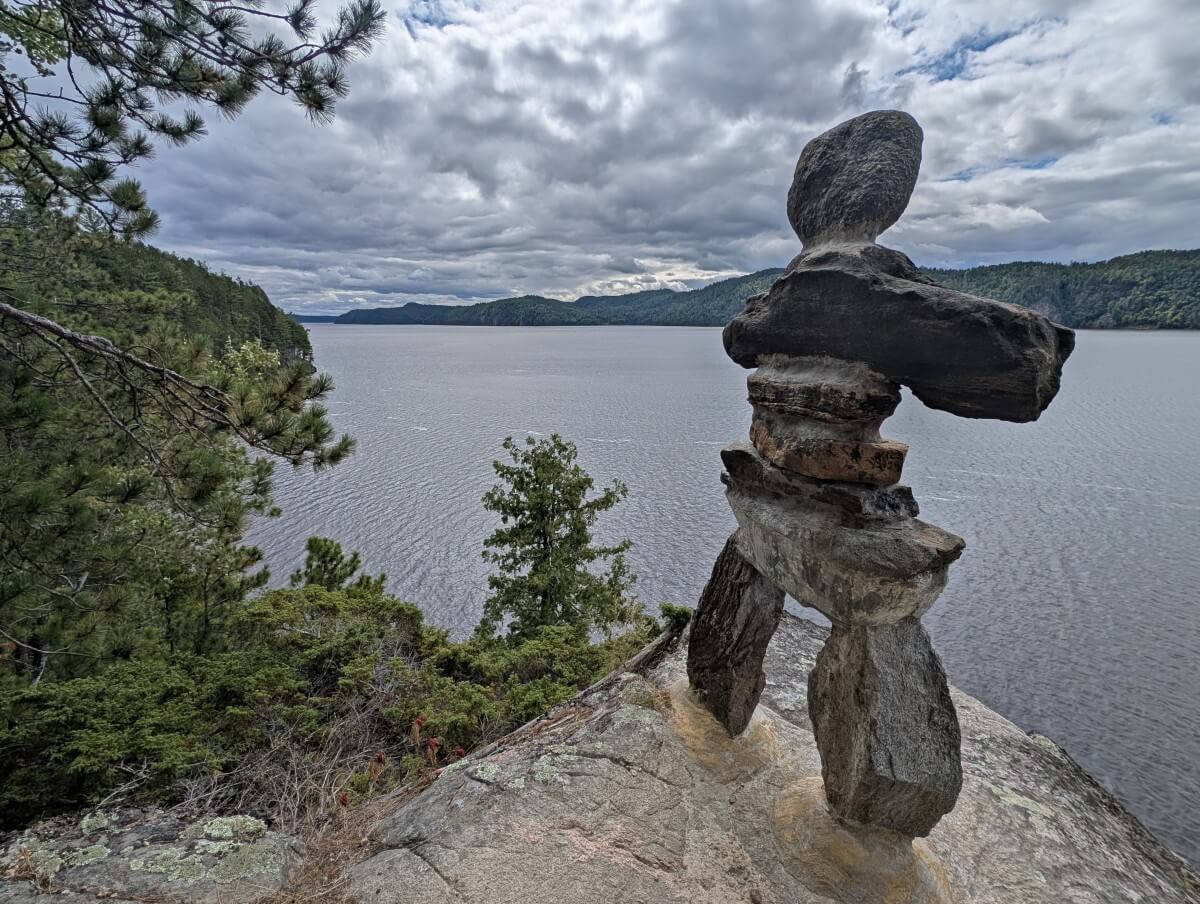
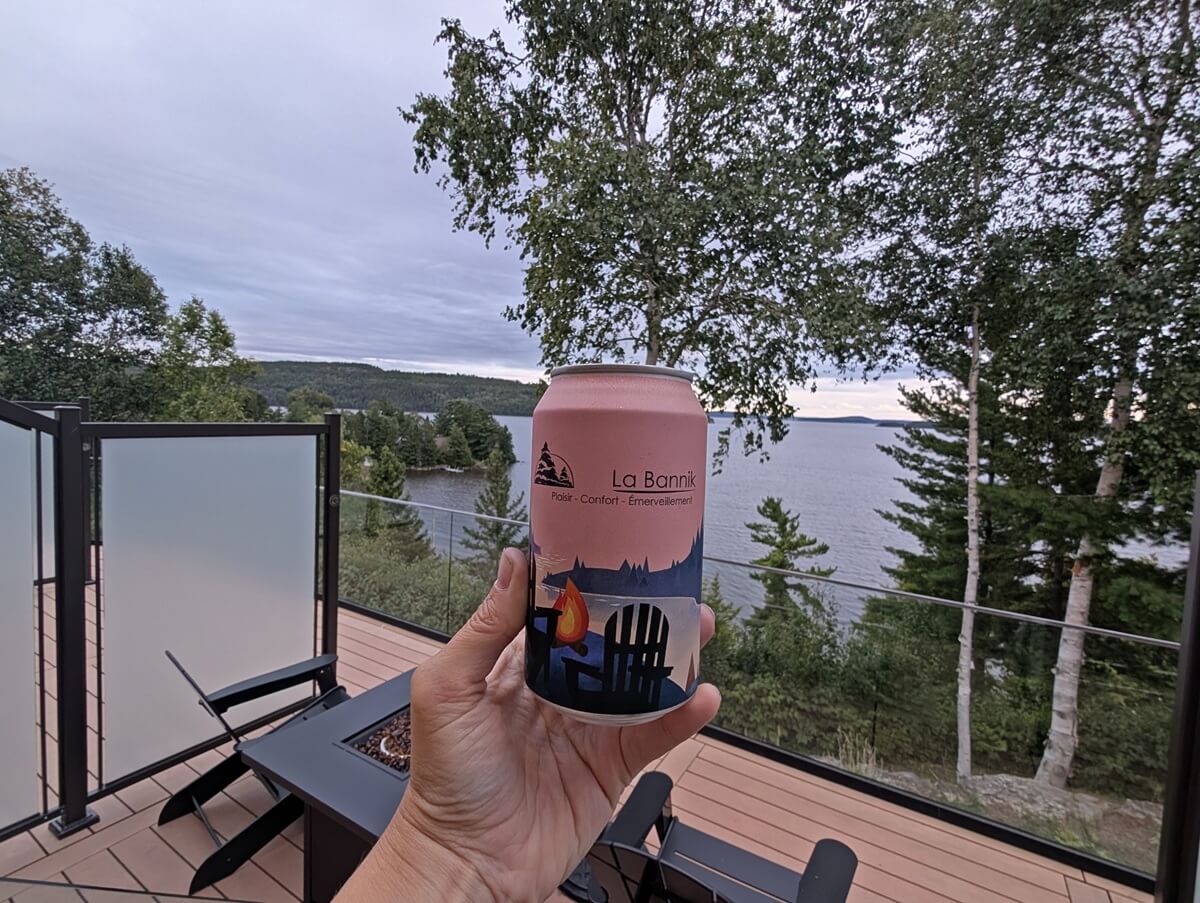
The Best Things to Do in Témiscamingue, Québec
Now we have a feel for the area, let’s get into the best things to do in Témiscamingue. I’ll start with what I believe to be the must see spot, Opémican National Park.
Use the map below to get orientated and plan your own trip to this peaceful corner of Québec.
Opémican National Park
Opémican National Park is Témiscamingue’s gateway to nature. Officially opening in 2019, it’s one of Québec’s newest ‘national’ (provincial) parks. Being so recently built, the facilities and design really set it apart. Sépaq staff told us that it never feels busy, even in the middle of summer. There is a daily access fee.
The park protects a long stretch of Lake Timiskaming’s shoreline, a very deep waterbody utilised for the logging industry in the 18th and 19th centuries. It also borders the Kipawa River, known for its whitewater.
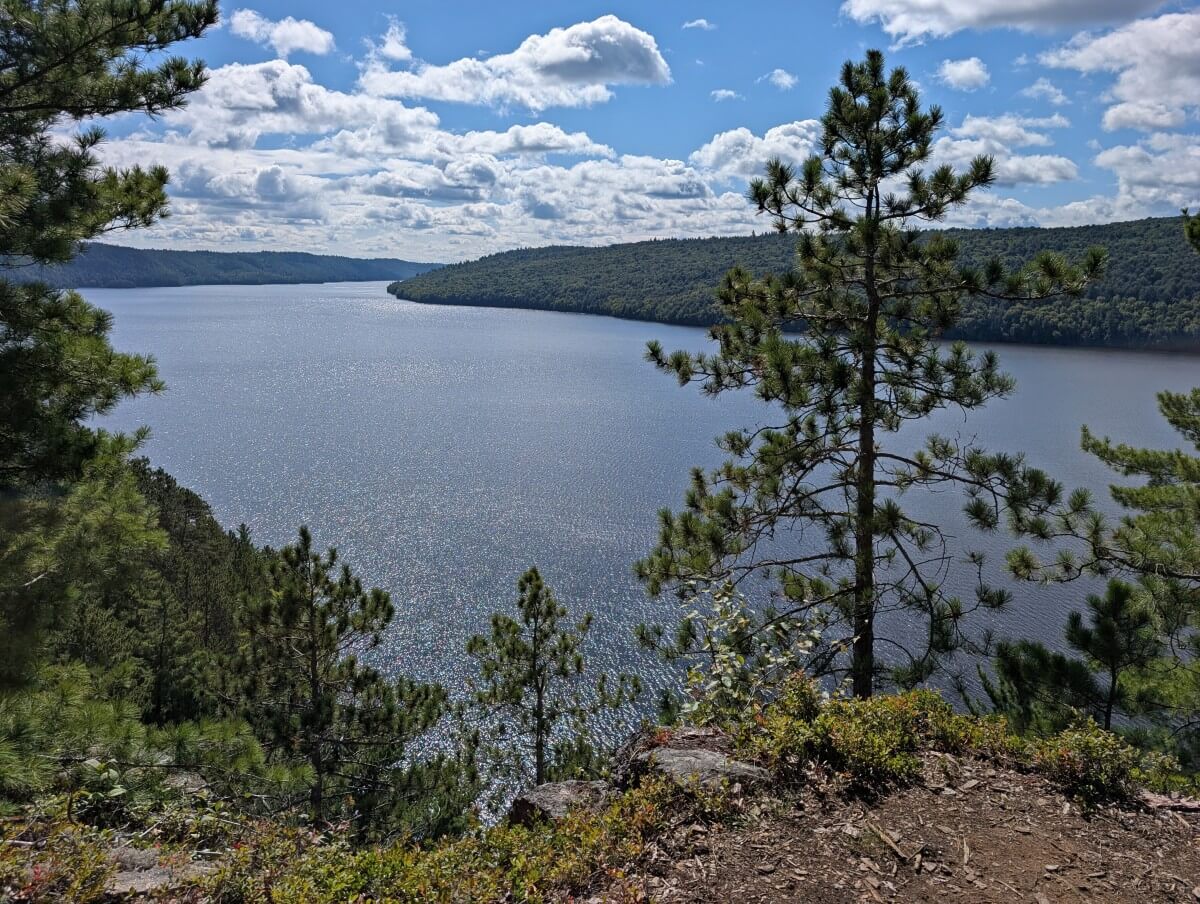
The forest bordering the lakes is a remarkable mix of coniferous and deciduous trees (including some impressively large pines) and provides habitat for the relatively rare carnivorous fisher.
Each of the four sectors provide different outdoor experiences. Pointe-Opémican and Rivière-Kipawa are primarily frontcountry with vehicle-accessible campgrounds, ready-to-camp sites and hiking trails while Île aux Fraises (Strawberry Islands) and Lac-White offer backcountry canoe camping experiences.

History and hiking trails
In the Rivière-Kipawa sector of the park, the powerful Grande Chute truly lives up to its name; kayakers even launch down it once a year! L’Inukshuk Trail leads to a viewpoint overlooking the lake’s deepest point (around 216 m), while the Paroi-aux-Faucon Trail passes the park’s peregrine falcon nesting area, with a French-language park quiz along the way
Over in the Pointe-Opémican sector, we took a guided tour of the Des Piers Trail, which (in a clockwise direction) traverses a gorgeous maple forest before reaching a steep cliff viewpoint bordered by pine trees.

Our guide, Dérek, combined plant and tree identification with insights into the ecological background of the area. It was so interesting that I was shocked when he said that this was his first English tour during the last two summer seasons! Be sure to check the tour schedule at the Visitor Centre.
Later, we met up with Dérek again to explore the park’s human history. Pointe-Opémican’s shoreline still has several structures from its days as a key log transport hub. Logs were gathered into massive booms (rafts up to 2km long!) and floated down the lake.
At its peak, 300 men worked at Pointe-Opémican. One prominent building still standing at the wharf is the red and white L’Auberge Jodoin, which housed a restaurant and bedrooms. Today, the wharf has kayak, canoe and pedal boat rentals. It’s also the best place to watch the sunset in the park.

Camping in Opémican National Park
Opémican National Park has options for both frontcountry (vehicle accessible) and backcountry camping (canoe access only). Campsite availability is usually good – reservations are usually only needed one or two weeks in advance. .
A standout feature in Opémican is the fully equipped Étoile ‘ready-to-camp’ sites, wood/canvas units that provide nearly everything you and up to five others need for a comfortable night in the woods.

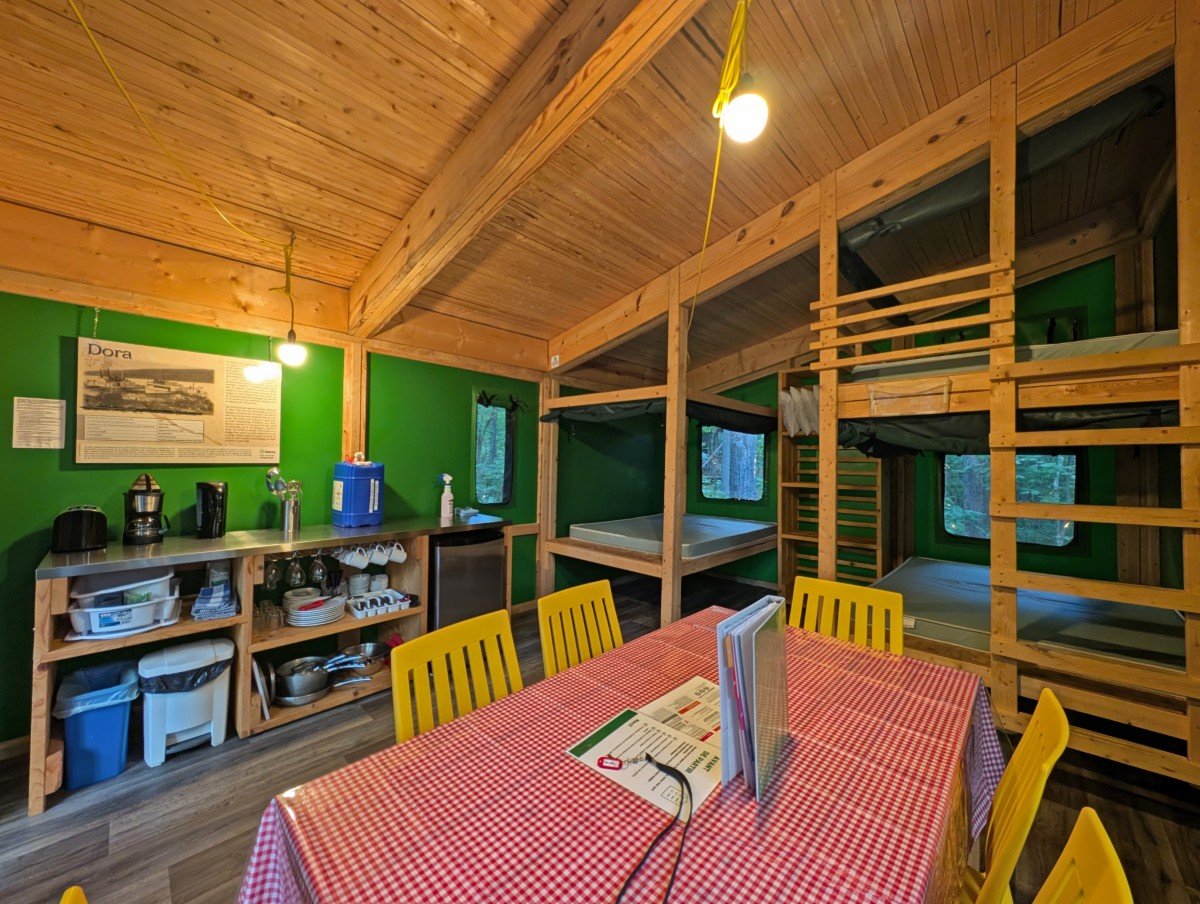
And when I say everything, I mean it – mattresses, propane stove, fridge, seating, kettle, cups, plates, cooking equipment, utensils and even wine glasses. The only things you need to bring are bedding, food and personal items. If you want to camp but don’t like sleeping on the floor or don’t have any camping gear, this is the way!
For a quiet, scenic experience, reserve a spot in the Rivière-Kipawa sector. A handful of traditional camp spots and ‘ready to camp’ sites perch on the top of a rock face above Lake Timiskaming, all steps away from hiking trails. Vehicle parking is 50-300m from each site.
The campground at Pointe-Opémican is much closer to facilities (showers, bike rentals, info centre) and each site has water and electrical services. There are 11 Étoile sites in this area, each with parking outside. Please note that dogs are allowed in one campground loop only.
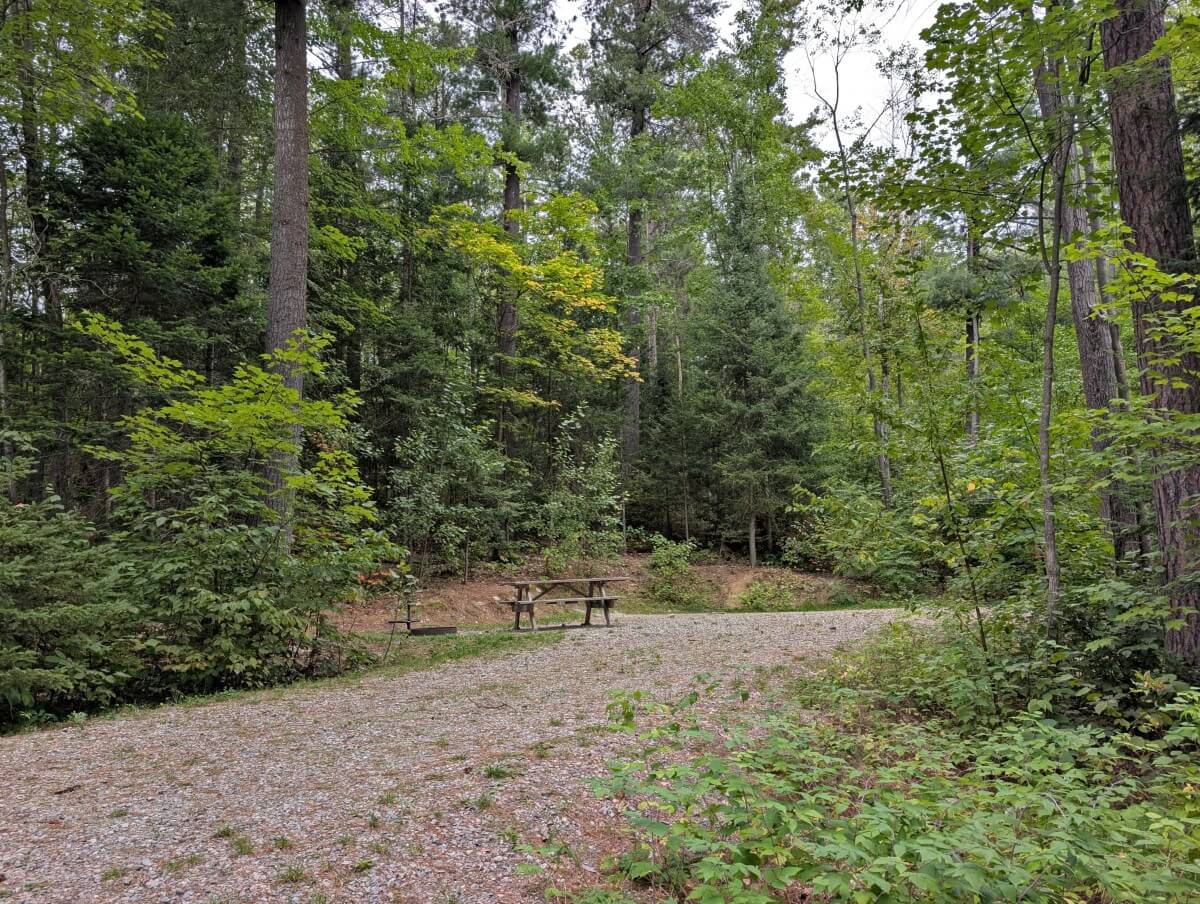
Explore the town of Témiscaming
Témiscaming unlike anywhere else I’ve visited in Québec. Located just across the border, the town has a real Québécois/English blend and feels very bilingual. It grew significantly in the 1920s with the construction of a pulp mill and was designed with some inspiration from England (gardens, fountains, architecture).
For such a relatively small place, Témiscaming offers quite a few different things to do. When entering from Ontario, look for the Bienvenue Quebec sign.
Head first to the Sentier des pipelines at the end of Rue de la Marina. Multiple staircases lead through the remains of the water pipes that once transported water from the dam to the hydroelectric generating station on the lake. Some are decorated with street art.

Next, check out the belvédère (lookout) over the Ottawa River. Back in town, the Musée de la Gare is the local railway museum in the old station. Behind the building, a 600m return trail leads down stairs to several viewpoints of the Chutes Gordon. These waterfalls are so powerful!
On the way out of town, check out the Subway in an old train carriage by the river and the Ancien barrage d’Hydro (dam). Pick up groceries, if needed, from the IGA and perhaps a poutine from the Casse Croute du coin (big portions!)

Visit Obadjiwan–Fort Témiscamingue National Historic Site
Lake Timiskaming is part of the Ottawa River and has been a key transportation route through this area for many thousands of years.
One of the narrowest points (just 250 wide!) is situated just south of Ville-Marie. This spot was used as a meeting and trading place by the Anicinabe people and other First Nation groups. Starting in the 17th century, explorers, fur traders, missionaries and colonists travelled through as well.
The first European trading post was established here in 1720 by the Compagnie du Nord. Situated almost halfway between Hudson’s Bay and Montreal, it became a strategic fur trade hub, later controlled at different times by both the Hudson’s Bay Company and the North West Company.

The Anicinabe remained a vital part of the part of the fur trade network, as primary trading partners (trapping, food), intermediaries, guides and company workers.
The Obadjiwan–Fort Témiscamingue National Historic Site is a recreation of the trading post at its peak. During the summer, there is a visitor centre, guided tours and immersive activities (admission fee).
There are interpretative signs in both English and French at each of the 14 stations depicting life in the 19th century fort. It’s definitely helpful for understanding the cultural and historical context of the area. Access to the site is free from early September to late June.
An unexpected highlight for us was the Enchanted Forest, a grove of twisted cedar trees that grew after all the pines were cut down to build the fort.
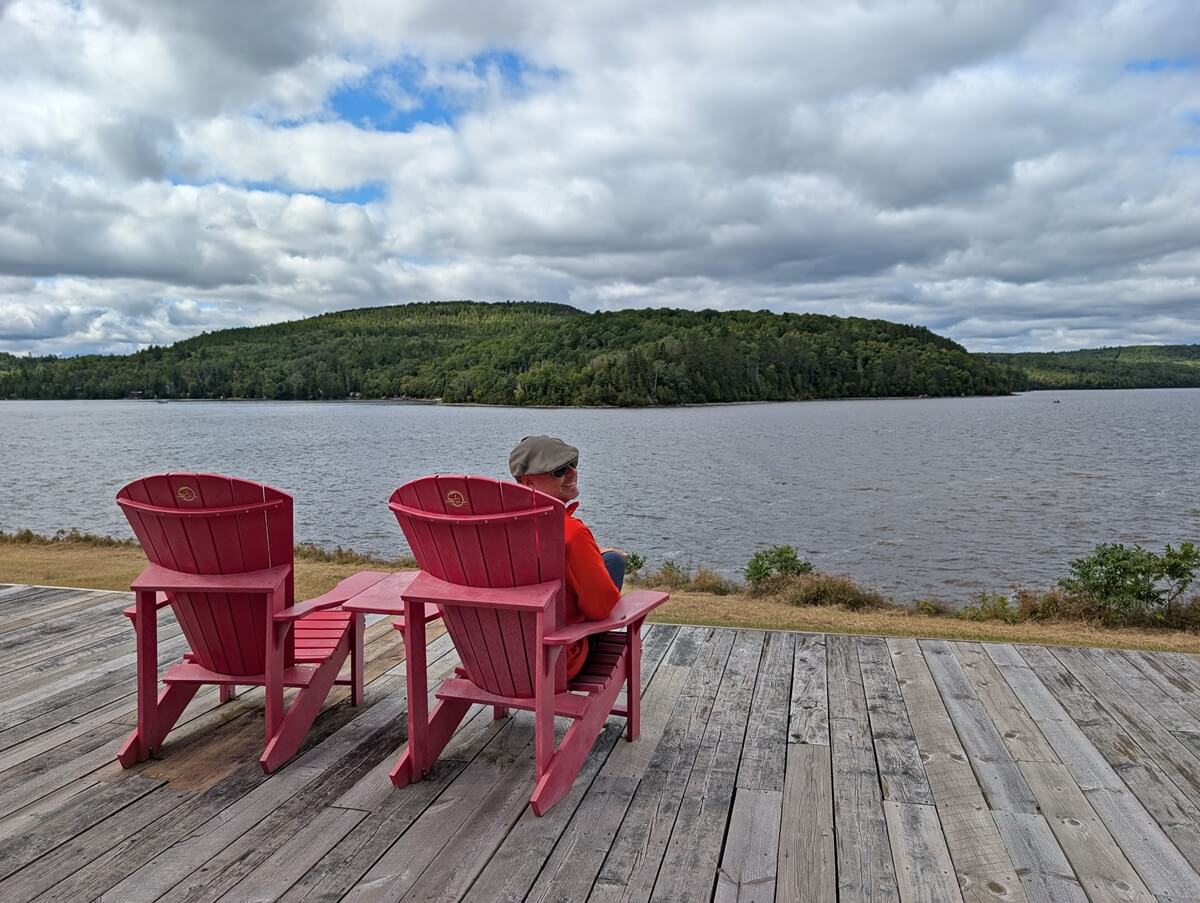
Discover the village of Ville-Marie
Ville-Marie has the reputation as being one of the most beautiful towns in Québec. And I would agree!
Situated right on the banks of Lake Timiskaming, Ville-Marie has made the most of its waterfront location with a large beach park including a swimming area, lawns and an outdoor music venue.
The main downtown street, Rue St Anne, is very pretty, with lots of brick buildings, flowers and trees.

Longstanding local brewery, Barbe Broue Microbrasserie, has recently moved to new premises opposite another local institution, La Gaufrière. This fast service cafe is a favourite for breakfast, with waffles being the most popular dish. I loved my breakfast poutine!
Just a block away is the oldest house in town, the Maison du Frère-Moffet, built in 1881. Next door is the impressive chateau-inspired Centre Frère-Moffet, a vocational and adult education center.

Tour local farms
During the last ice age, Témiscamingue was buried under glaciers up to 8km thick. When the glaciers retreated, Lake Timiskaming was formed and huge amounts of deposits were left around it.
Thanks to its fertile soils, northern Témiscamingue is rich in farmland. Soy and wheat are some of the most popular crops, with dairy farms also prevalent. In the forested south, there are several maple shacks.
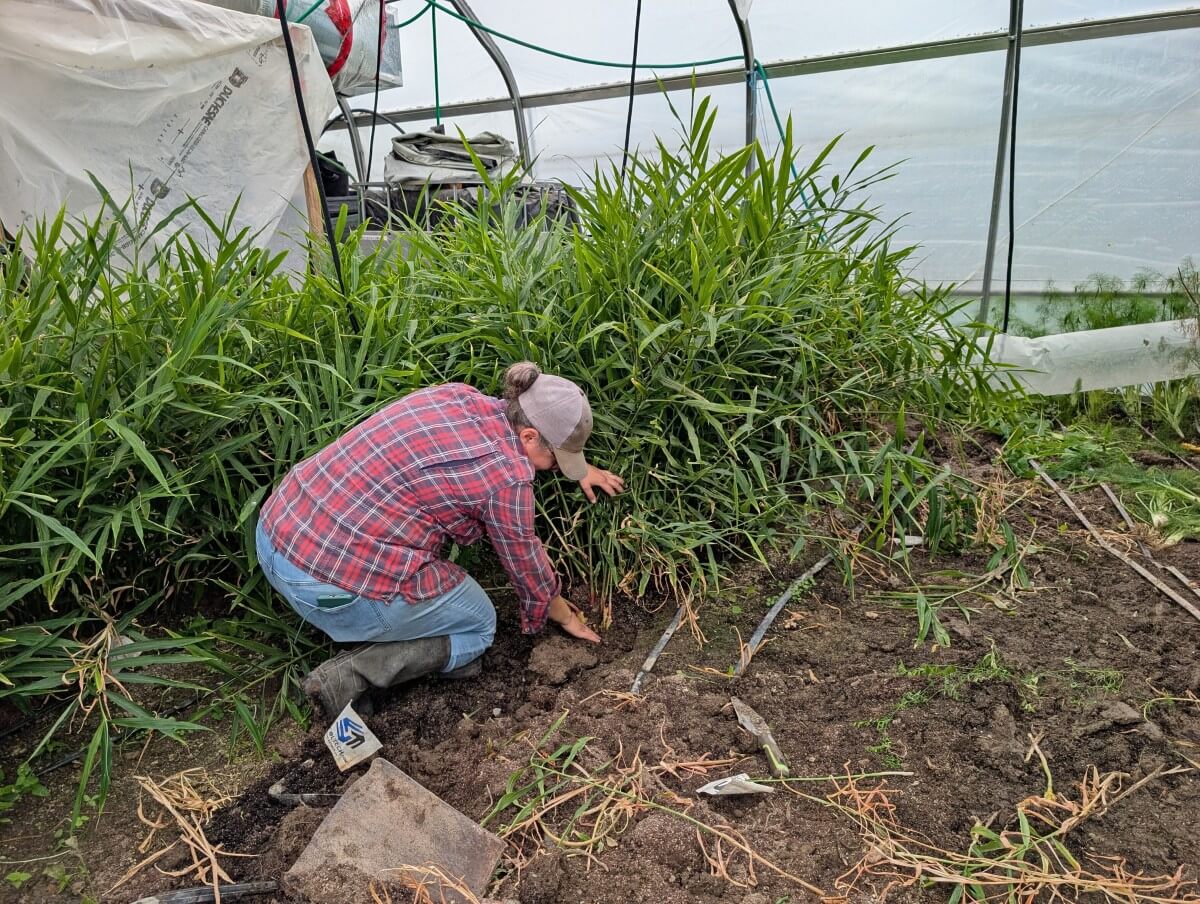
Ferme Nordvie is a multi-generational family farm specialising in strawberries but also growing a variety of other fruits, vegetables and herbs. They have a wonderful little boutique selling fresh produce as well as teas, fruit aperitifs, slushies (summer only), finishing salts, local bakery treats and more.
The juices are a highlight, capturing all the sweet, vibrant flavors of strawberries picked at the height of their sweetness in summer. So good!
Overhearing our delight after finding fresh ginger for sale, owner Madeleine took us for a tour of their greenhouses. Apparently ginger is an excellent high-density crop, who knew?
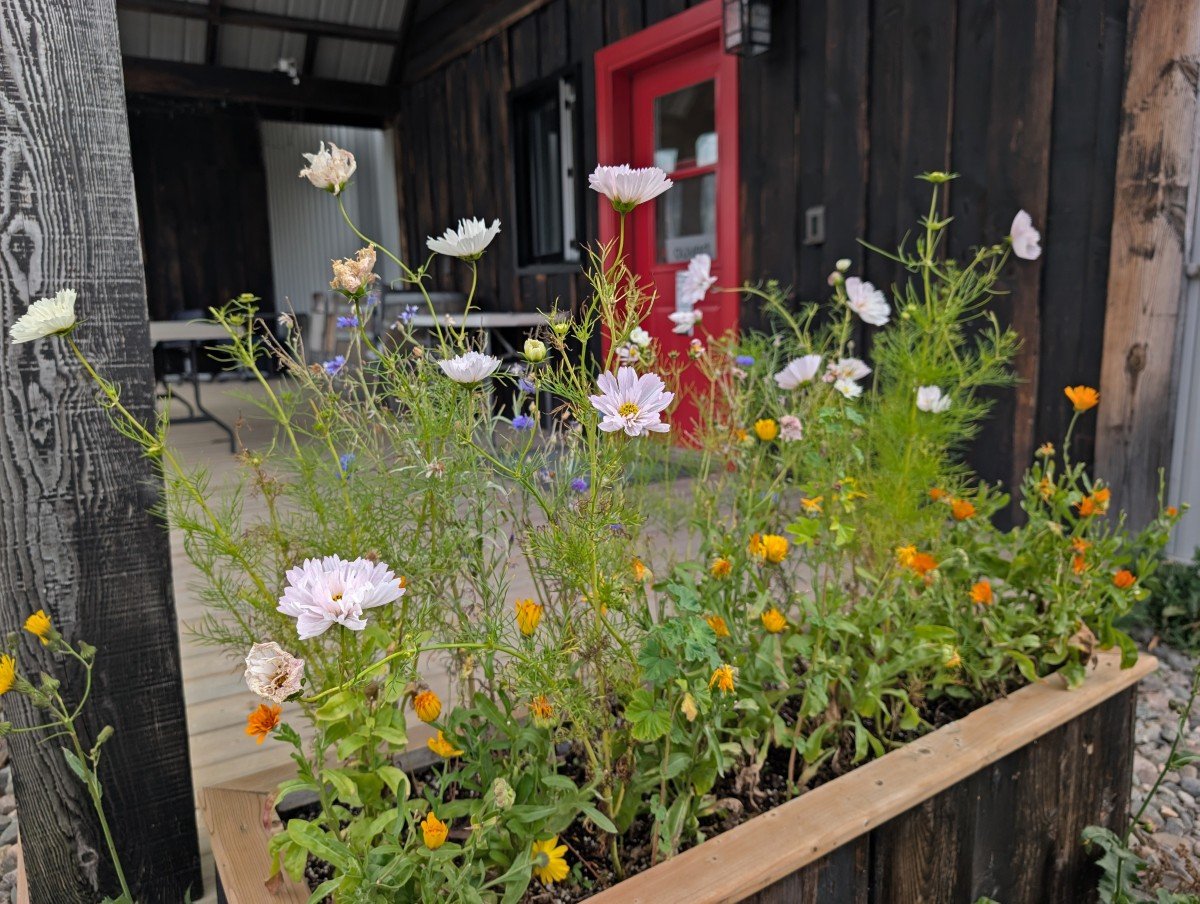
Go canoe camping
If you love backcountry adventure, consider including a canoe camping trip into your itinerary. Témiscamingue has over 7,500 lakes and rivers.
One of the easiest areas to reach is the Strawberry Islands (Île aux Fraises), part of Opémican National Park. There are two canoe campsites, both on the luxurious side with proper outhouses and picnic benches! To reserve a site, you must call SEPAQ (819-627-3551, option 2).
Continue further into the backcountry from the Strawberry Islands or check out ZEC Kipawa, a huge recreational area where fishing and hunting are permitted. There are four suggested canoe circuits, ranging from 3 to 14 days.
We were originally planning to go on a canoe camping trip while in Témiscamingue. Unfortunately, an airline labour strike delayed our trip and our new dates coincided with the Raid International Témiscamingue, a two-day adventure race.
While the event sounded amazing, it also meant that every single rental canoe in the area had been snapped up. So if you have a September canoe camping trip in the Témiscamingue area in mind and need a rental, check the dates of the Raid race first!
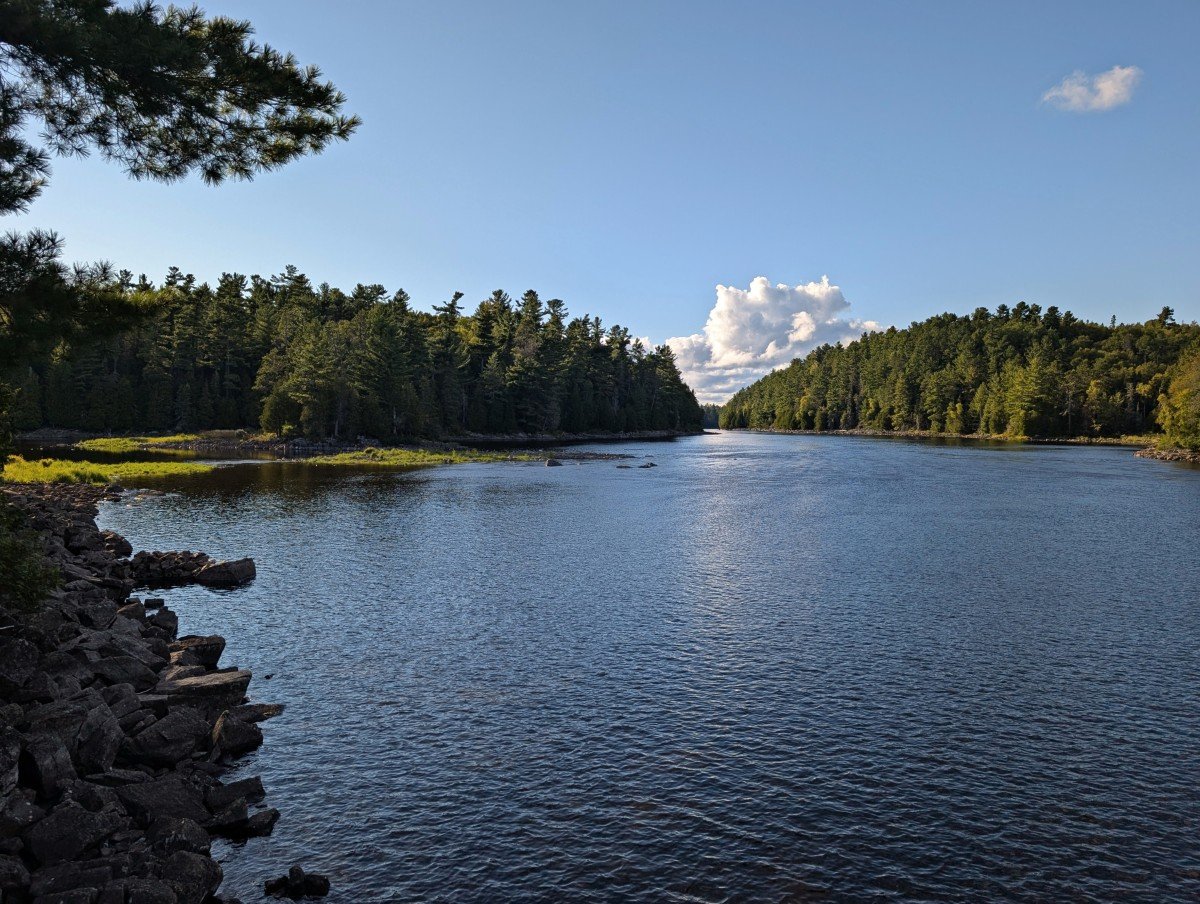
Témiscamingue trip planning
Keep the following tips and insights in mind when planning your Témiscamingue adventure.
When to go
The main tourism season for Témiscamingue is late June to late August. The weather is warmest during this time.
If you visit outside of this period, note that some restaurants, tours and attractions will be closed. On the other hand, you’ll have waterfalls and hiking trails all to yourself. Mosquitoes and blackflies will be less of an issue in late summer.
For autumn colours, plan to visit in mid September (second or third week). We saw some colour change during the first week of September.
Opémican National Park is technically open all year round but vehicle access is restricted from mid October to early June. It is still possible to hike in.
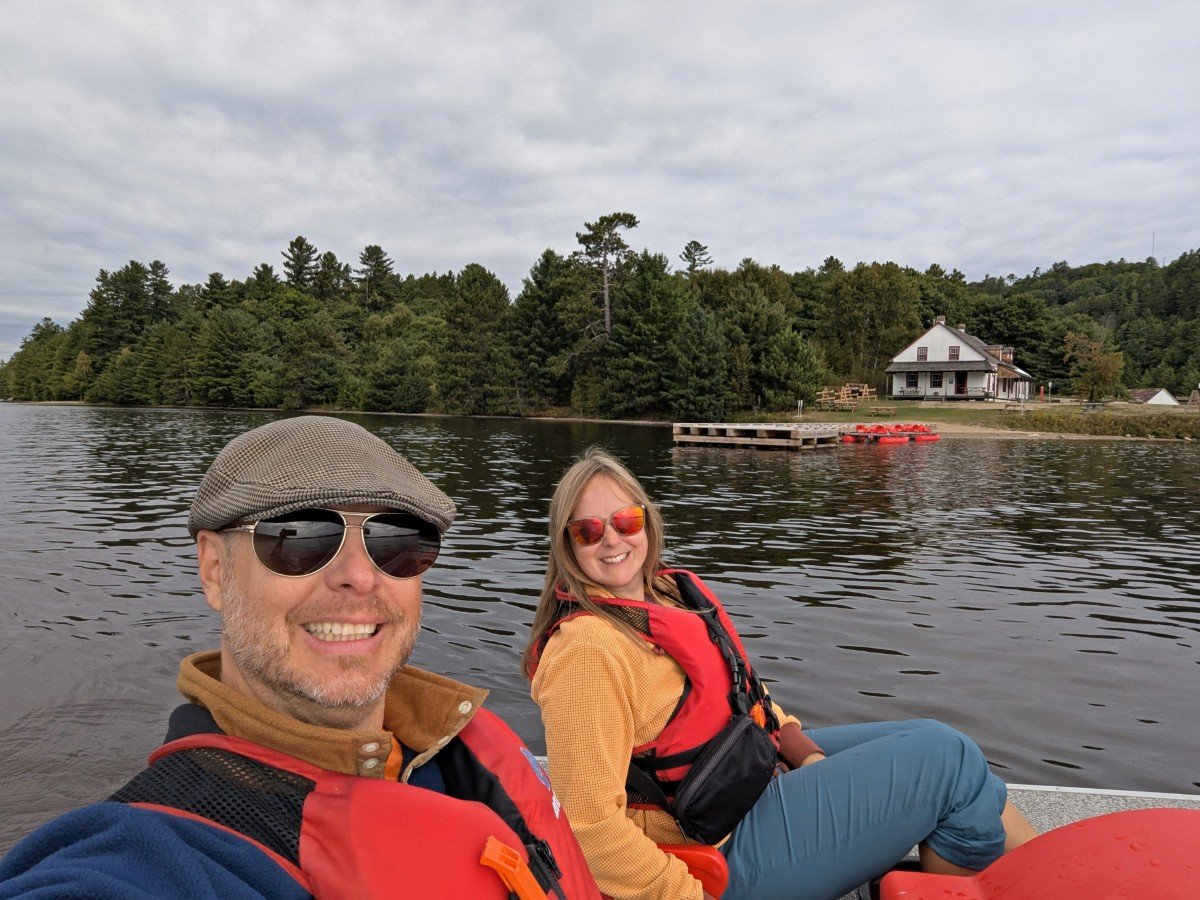
Suggested itinerary
4 days is my recommendation for a relaxed trip to Témiscamingue. Only have a long weekend? Condense day 1 and 2 and then add any missed activities in Témiscaming onto the last day.
First, explore Témiscaming (choice of waterfalls, museum, tunnels, lookout), pick up groceries and then stay overnight in the Pointe-Opémican sector in Opémican National Park in the campground or one of the ready-to-camp sites.
On day two, go for a hike in the Pointe-Opémican sector of the park (I’d recommend the Des Piers Trail) and learn about the historical buildings at the wharf. Join a guided tour or go for a paddle. Watch the sunset at the wharf. Stay again at Opémican overnight.
For your third day, travel towards Ville-Marie, with a stop at the Rivière-Kipawa sector to hike the Grand Chute Trail and/or L’Inukshuk. Have lunch at O Shack in Laniel (access is through the campground). Arrive in Ville-Marie in the afternoon – wander the waterfront, enjoy a beer at Barbe Broue Microbrasserie and then retire to Le Bannik for the night (campground or rooms).
On the final day, first visit nearby Obadjiwan–Fort Témiscamingue National Historic Site. Head into Ville-Marie for lunch, then take a drive to some of the local farms. Visit anywhere else you’ve missed on the way home!

How to get to Témiscamingue
As previously mentioned, Témiscamingue is relatively close to quite a few Ontario cities. It’s about one hour drive northeast of North Bay and 4 hours drive northwest of Ottawa.
You’ll need your own vehicle to reach Témiscamingue and explore. Travelling from far? Fly to Toronto or Ottawa and then rent a vehicle.
Montréal is also an option if you’re wanting to explore the Abitibi-Témiscamingue region as a whole (about 8 hours drive). We made a longer trip of it and also visited La Vérendrye Wildlife Reserve and Aiguebelle National Park on the way to Témiscamingue. I’ll share more about that soon!
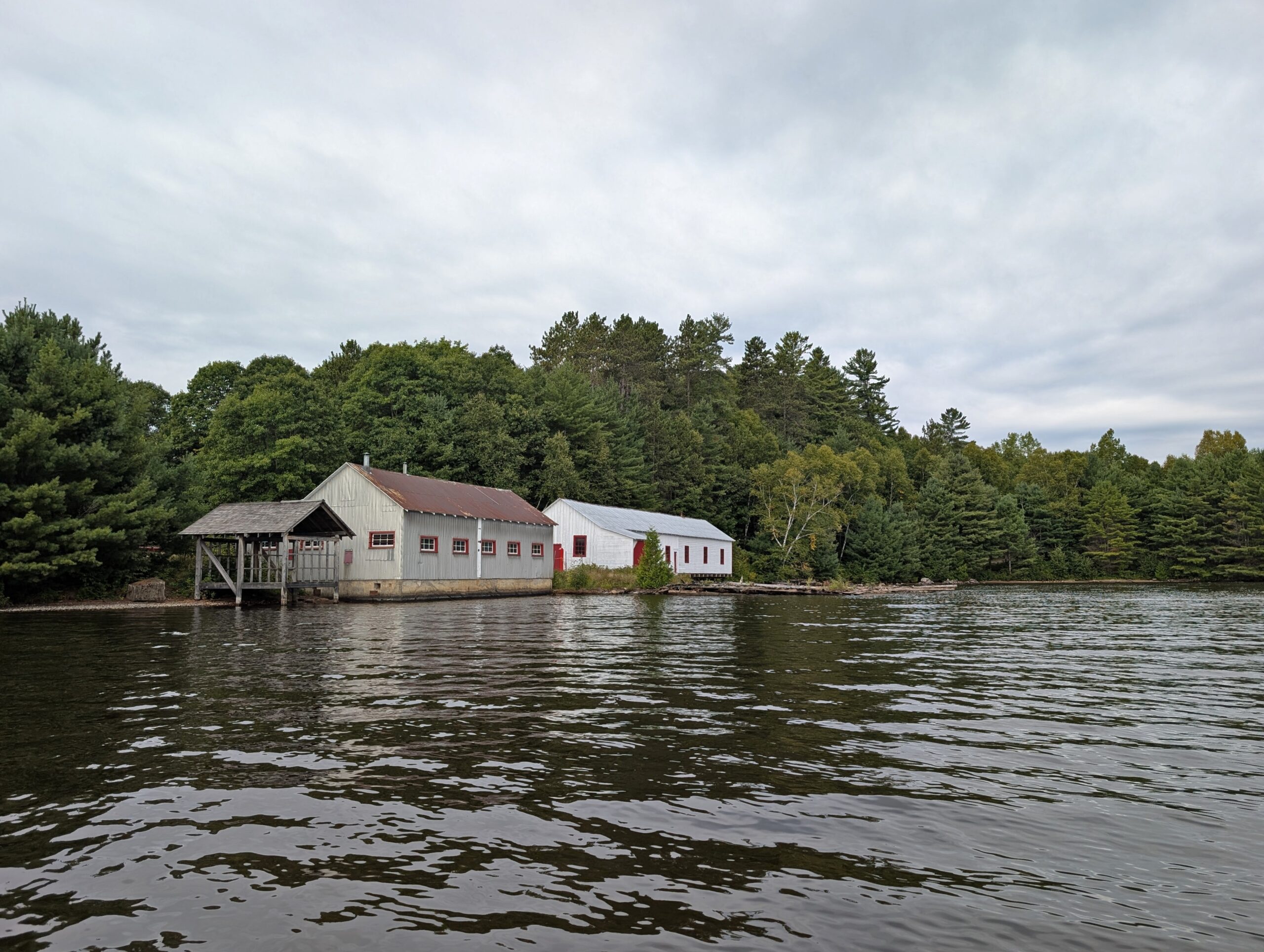
Travel tips
- Carry some cash. It’s handy to have some physical money while travelling in Témiscamingue. While the vast majority of places will take card, a few of the smaller local businesses only take cash (or would prefer it). One example is La Gaufriere in Ville-Marie
- Bring bug repellent. While we didn’t have any issues with mosquitoes and blackflies in early September, I have heard that they can be nasty earlier in the summer. Bring your favourite repellent and other items (like a head net) as needed, especially when camping
- The road to the Rivière-Kipawa sector of Opémican park is unpaved. It seems to be maintained pretty well, however. Phone signal is limited here as well
- Obadjiwan–Fort Témiscamingue has a short operating season. To access the site from early September to late June, walk along the beach or go around the fence to the right of the visitor centre
- Remember to pay the park fees for Opémican. Québec’s national parks have daily access fees. It’s possible to pay online
- Don’t go out for dinner too late. There are not that many dining options in this area so prepare to go out earlier for your evening meal (before 7pm) rather than late
- Pick up groceries in Témiscaming or Ville-Marie. These are the best places to stock up, besides the local farm shops
- Practice a little French. While we found that a lot of people working in local tourism spoke English, it is polite to know at least the basics. Hello (bonjour), thank you (merci) and please (s’il vous plait) will be welcomed!
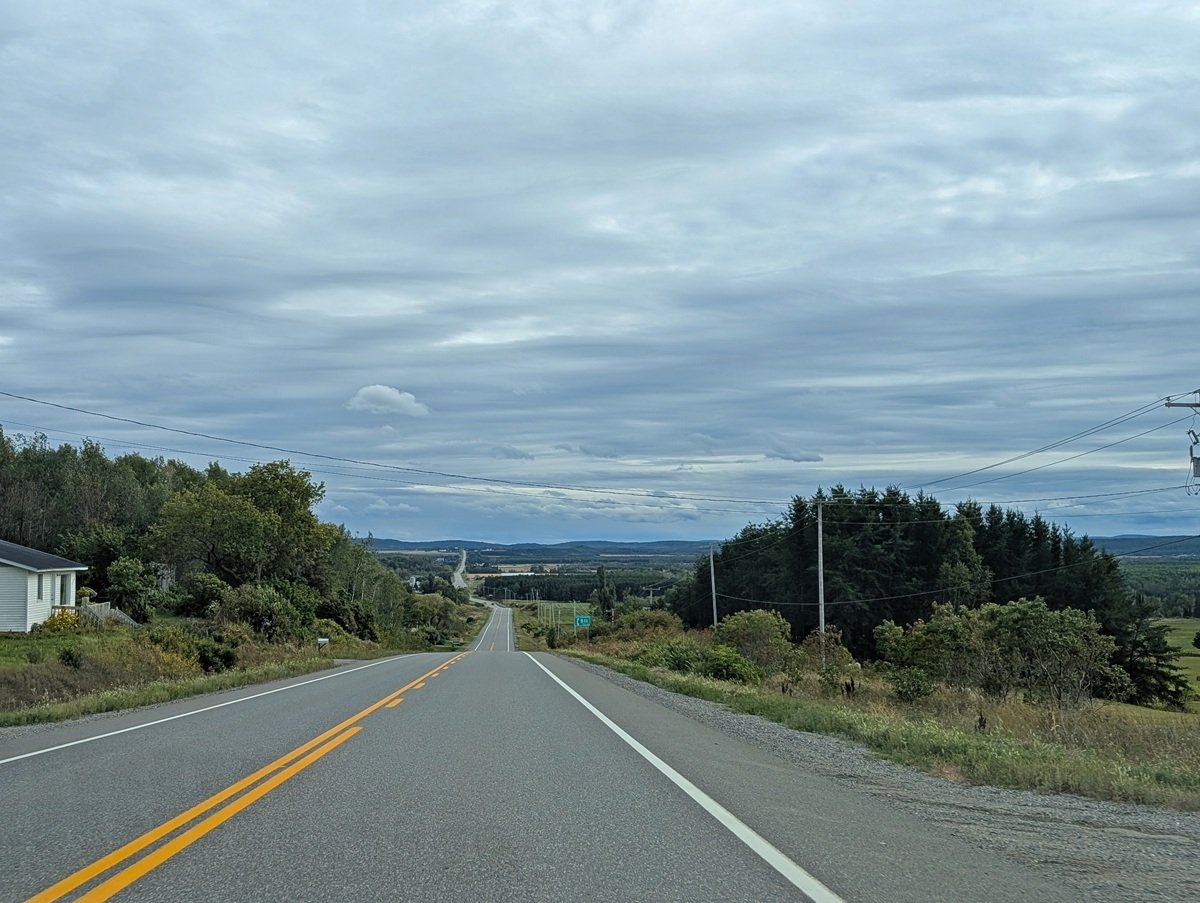
You may find these other Québec posts helpful
Outdoor Adventures in Abitibi, Québec: Aiguebelle National Park & La Vérendrye Wildlife Reserve
Québec’s Whale Route: Highway 138 Road Trip Guide
Ultimate Two Week Coastal Quebec Road Trip Itinerary
Magdalen Islands Travel Guide: The Best Things to Do, See & Eat
10 Fast and Fun Gaspé Peninsula Hiking Trails, Québec
Four Fun Ways to Go Whale Watching in Tadoussac, Quebec
The Best Places to Camp on the Gaspé Peninsula
Check out these recently published posts:

One half of the Canadian/British couple behind Off Track Travel, Gemma is happiest when hiking on the trail or planning the next big travel adventure. JR and Gemma are currently based in the beautiful Okanagan Valley, British Columbia, Canada. Consider buying us a coffee if you have find any of our guides helpful!

